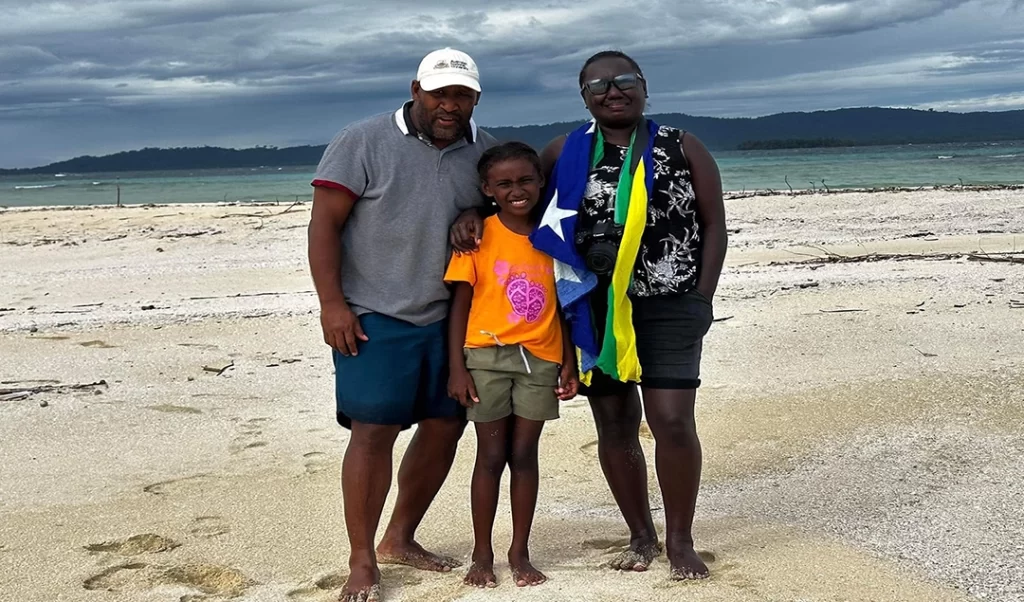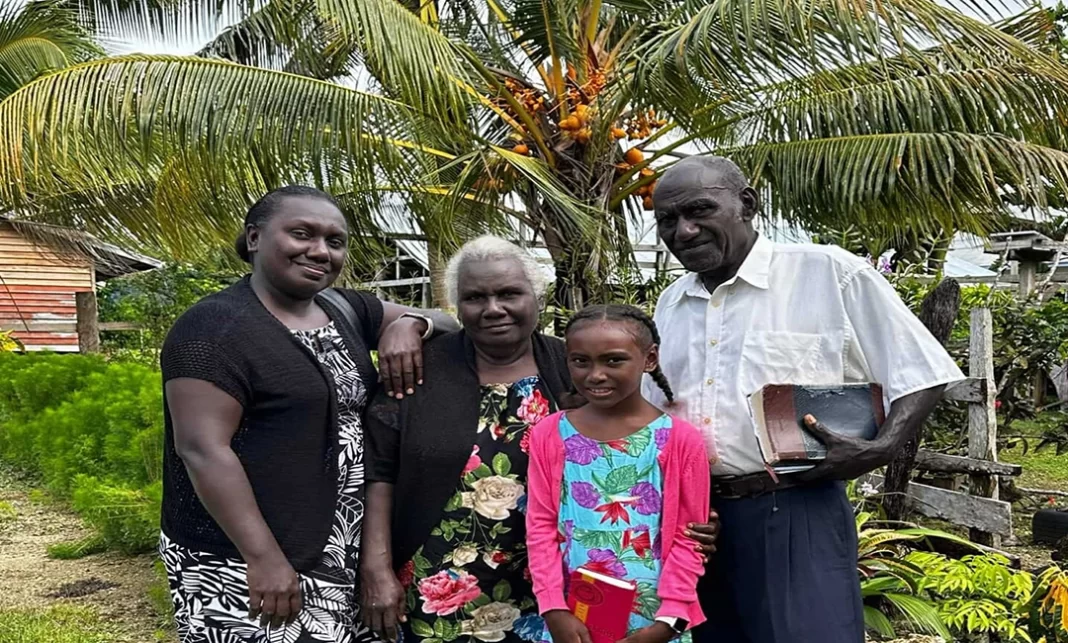The 2024 theme for Aotearoa’s first Solomon Islands Pidgin Language Week is ‘Protektim langguis an kalsa blong yumi – Protect our language and culture’.
Some 2000 Solomon Islanders call Aotearoa New Zealand home with an additional 1000 participating in the Recognised Seasonal Employer (RSE) programme.
Dr Kerryn Sogha Galokale hails from the island of Bareho in Nono Lagoon, Marovo, Western Province and Loloko village of Choiseul Province. As a girl she and her siblings would regularly accompany her parents, Adventist missionaries, hiking to outer villages.
“One of my fond memories was in 1994, when our family hiked for nine hours, crossing and re-crossing a river countless times and climbing up a rocky mountain to Salaumarau Village, located at a higher altitude.”
When she graduated from Waipapa Taumata Rau, University of Auckland earlier this year, she was able to lean into her upbringing, to help traverse the challenges of academic life. Dr Galokale and her husband Dr Derek Futaiasi undertook their PhD studies at the same time with their small family separated by the Tasman sea. Dr Futaiasi studied in Canberra and Dr Galokale with their daughter Liz-Amarissah arrived in Aotearoa five years ago in 2019 to take up her PhD scholarship.
She will again set out from her beloved Solomon Islands in January, having been appointed the 2025 Te Tomokanga Post-Doctoral Fellowship at the University. The two-year Fellowship with Te Kura Tangata, Faculty of Arts will see Dr Galokale work towards publishing her research and contributing to a teaching programme.

“Being awarded the Te Tomokanga Research Fellow position has been one of the best blessings of my life.
“New Zealand will be my family’s second home, and I look forward to representing the Melanesia voice at UoA and continuing to connect with my people and country.”
Diversity of cultures
Solomon Islands people and its nation are diverse in cultures, languages and rich natural resources.
“We may just be dots on the world map, but our diversity is our rich resource and heritage, which makes me proud to be from Solomon Islands. We have nine provinces and between 60-70 indigenous languages, says Galokale.
“On top of our multilingual languages, we have the Solomon Islands Pijin, which connects all nine provinces. Also, we are unique because our nation is made up of Melanesians, Polynesians and Micronesians.
“We are a nation of unique skin colours and natural beauty gifted from God to us. Most of all, our Solomon Islands people are very friendly, and people will always greet you with our island smiles. We love to crack jokes and share good laughs.”
Continuing the language journey
“Preserving and passing on my two languages (Marovo and Sengga languages) to my daughter is challenging, especially as my daughter grew up in Australia and New Zealand, and English became the dominant language at home. However, I am not giving up on her, says Galokale.
“I taught her to count one to twenty in both languages and I need to keep doing it so that counting in our languages becomes deeply rooted in her heart. Also, I try to teach her the lullaby songs in our languages and often use languages for simple verbs like, eat, sleep, come, go, bath, etc.
“She is catching up pretty fast and I hope that I will continue to pass on our languages so that the languages are preserved and maintained in the next generations.
As for myself, whenever I speak with my parents or aunties, I try my best to use the Sengga language. As the theme of Solomon Islands Language Week 2024 states, ‘Protecktim langguis an kalsa blong yumi – Protect our language and culture’.
“I think protecting our language and culture should be everybody’s business every day. Our local languages breathe into us our cultural values, practices and indigenous knowledge. When we protect our languages and cultures, we are protecting and respecting our cultural spaces, identity, values, practices, customs and indigenous knowledge systems.”
Did you know?
- Solomon Islands consist of approximately 992 islands, atolls and reefs, but only 347 of these islands are inhabited.
- Solomon Islands gained independence in 1978.
- Alvaro de Mandana from Spain was the first European person to arrive in the isles more than four centuries ago in 1568. Believing there was gold, he called them the Solomon Isles, after King Solomon’s mines.
- In the late 19th century the Solomon Islands were among several Pacific nations to suffer from ‘Blackbirding’ the kidnapping of people forced into labour on plantations in Fiji and Australia. The inhumane practice against Solomon Islanders and other Pacific nations ended in 1872.
- Kennedy Island (aka Kasolo Island) in the western province was previously known as Plum Pudding Island. It was named after U.S President John F. Kennedy after he was marooned there, when his boat sank during World War II. President Kennedy was rescued by locals.






